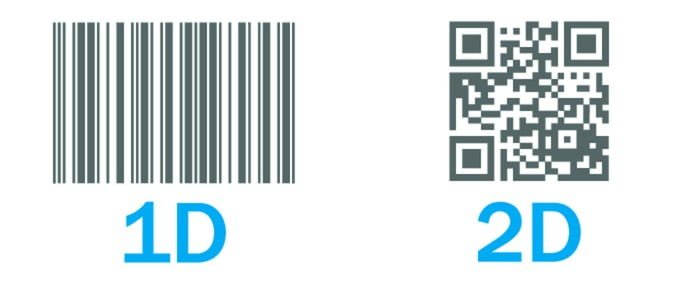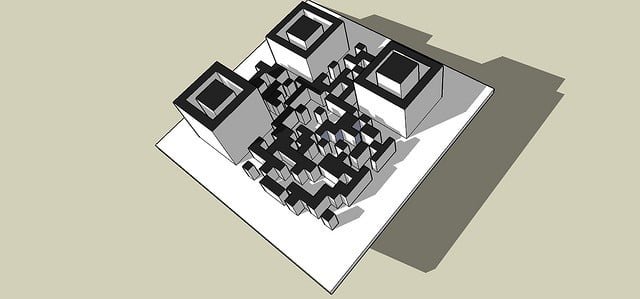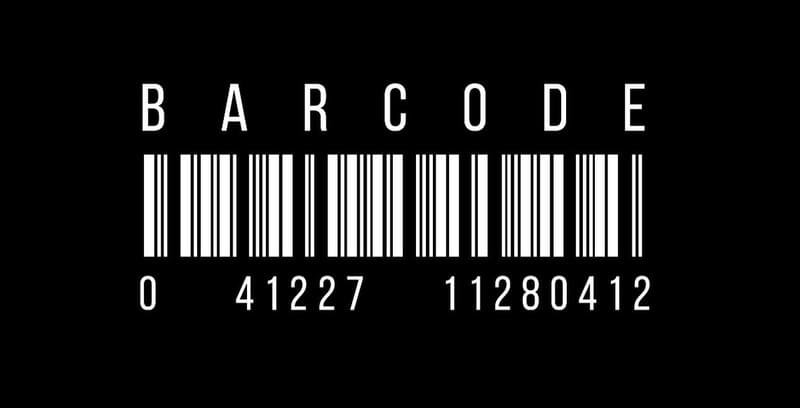The Battle of the Barcodes: Which is Better, 2D or 3D?
2D vs 3D barcode? 2D barcodes can store more data vertically and horizontally, while 3D barcodes can store data volumetrically, offering enhanced capacity and functionality for various applications.
Barcodes have become an integral part of our daily lives, even if we may not always realize it. These small, seemingly insignificant lines and patterns hold a wealth of information that helps businesses streamline their operations and improve efficiency. In simple terms, barcodes are graphical representations of data that can be scanned by a barcode reader to retrieve the encoded information.
The importance of barcodes in inventory management and supply chain operations cannot be overstated. They provide a standardized way to identify products, track inventory levels, and facilitate the movement of goods from manufacturers to retailers. Without barcodes, managing large inventories would be an arduous task prone to human error.
The difference between 2D and 3D barcodes
While most people are familiar with traditional 1D (one-dimensional) barcodes commonly found on product packaging, there are also two other types: 2D (two-dimensional) and 3D (three-dimensional) barcodes. The main difference lies in their physical appearance and structure.
2D barcodes are more complex than their 1D counterparts as they can store significantly more data. Instead of just vertical lines like traditional barcodes, they consist of squares or dots arranged in a grid pattern. This allows them to encode alphanumeric characters as well as special symbols or even images.
On the other hand, 3D barcodes take things one step further by adding depth or height information along with the usual width dimension found in traditional codes. This makes them particularly useful for tracking irregularly shaped objects or items that require precise positioning within a three-dimensional space.
Advantages and disadvantages of 2D barcodes
One major advantage of using 2D barcodes is their higher data capacity compared to traditional ones. With more space available for encoding information, businesses can include additional details such as batch numbers or expiration dates directly on the product label itself.
Furthermore, 2D barcodes are generally smaller in size compared to their 1D counterparts. This means that they can be printed on smaller labels or even embedded directly into the product packaging, saving valuable space and reducing the risk of damage or loss.
However, there are also some disadvantages to consider when using 2D barcodes. One limitation is their limited scanning range. Unlike traditional barcodes that can be scanned from a distance, 2D codes require close proximity for accurate reading. This can slow down scanning processes and may not be suitable for applications where speed is crucial.
Additionally, while 2D barcodes offer many advantages in terms of data capacity and size, they may not be as durable as traditional ones. The intricate patterns and small dots or squares used in these codes can wear off over time or become damaged during handling or transportation.
Advantages and disadvantages of 3D barcodes
In contrast to their two-dimensional counterparts, 3D barcodes offer several unique advantages that make them ideal for specific use cases. One major advantage is their higher scanning range compared to both traditional and 2D codes. This means that barcode readers can capture information from a greater distance, making them more suitable for applications where quick scanning is required.
Moreover, due to their three-dimensional nature, these barcodes tend to be more durable than other types. They can withstand harsh environments such as extreme temperatures or exposure to chemicals without losing readability. This makes them particularly useful in industries like aerospace and defense where products may undergo rigorous testing or face challenging conditions.
Another advantage of using 3D barcodes is their ability to track irregularly shaped objects accurately. Traditional linear codes often struggle with curved surfaces or non-standard shapes since they rely on a flat surface for optimal reading conditions. With three-dimensional information encoded into the barcode itself, tracking objects with complex geometries becomes much easier.
However, there are also some drawbacks associated with 3D barcodes. One limitation is their lower data capacity compared to 2D codes. The additional depth or height information takes up space that could otherwise be used for encoding more data. This can be a significant drawback in applications where a large amount of information needs to be stored within the barcode.
Furthermore, due to their larger size and more complex structure, reading 3D barcodes can be more challenging than other types. Barcode readers need to have specialized capabilities and algorithms to accurately interpret the three-dimensional information encoded in these codes. This complexity can lead to slower scanning speeds or higher error rates if not properly implemented.
Use cases for 2D barcodes
The versatility of 2D barcodes makes them suitable for various industries and applications. In the retail and consumer goods sector, these codes are commonly used for inventory management, price labeling, and product tracking. They allow retailers to quickly scan items at checkout while also providing valuable data on stock levels and sales trends.
In healthcare and pharmaceuticals, 2D barcodes play a crucial role in ensuring patient safety by enabling accurate medication tracking and verification processes. By scanning the barcode on a medication package or label, healthcare professionals can confirm its authenticity, expiration date, dosage instructions, and potential drug interactions.
Transportation and logistics also benefit from the use of 2D barcodes as they facilitate efficient tracking of packages throughout the supply chain. From warehouse management systems to delivery services, these codes enable real-time visibility into shipment status while minimizing errors associated with manual data entry.
Use cases for 3D barcodes
While less common than their two-dimensional counterparts, there are specific industries where 3D barcodes offer unique advantages over other types of codes.
In aerospace and defense applications where precision is paramount, three-dimensional barcodes provide an effective solution for part identification during manufacturing processes or maintenance procedures. The ability to encode depth information allows engineers or technicians to quickly locate and identify specific components, reducing errors and improving efficiency.
Similarly, manufacturing and industrial applications can benefit from the use of 3D barcodes for tracking complex assemblies or machinery. By encoding detailed information about each component’s position within a larger structure, these codes enable accurate inventory management and streamlined maintenance processes.
In the construction and architecture industry, 3D barcodes offer a way to track building materials or equipment throughout the construction process. By scanning these codes at various stages, project managers can ensure that the right materials are in place at the right time while also monitoring progress and identifying potential bottlenecks.
Comparison of scanning speed and accuracy between 2D and 3D barcodes
Several factors influence the scanning speed and accuracy of both 2D and 3D barcodes. The type of barcode reader used, lighting conditions, barcode size, printing quality, as well as any damage or wear on the code itself can all affect performance.
Studies comparing the two types of barcodes have shown mixed results in terms of scanning speed. While some studies indicate that traditional linear codes may be scanned slightly faster due to their simpler structure, others suggest that with advancements in technology, there is little difference between them.
Accuracy is another important factor to consider when comparing barcode types. Both 2D and 3D codes have been shown to achieve high levels of accuracy when properly implemented. However, it is worth noting that reading three-dimensional information requires more advanced algorithms compared to traditional linear codes or even two-dimensional ones. This complexity can lead to higher error rates if not handled correctly.
Cost considerations for implementing 2D and 3D barcodes
Implementing any type of barcode system involves several cost considerations beyond just purchasing barcode readers or printers. Factors such as software integration with existing systems, training employees on proper usage procedures, label printing costs (including specialized materials for durability), maintenance requirements for scanners/printers all contribute to overall implementation costs.
In general, 2D barcodes tend to be more cost-effective compared to 3D codes. The simpler structure and widespread adoption of two-dimensional codes have led to a larger market for compatible hardware and software solutions. This increased availability drives competition, resulting in lower prices for equipment and services.
On the other hand, due to their more specialized nature, 3D barcodes often require custom-built or specialized barcode readers capable of interpreting three-dimensional information accurately. These scanners can be significantly more expensive than traditional ones or even those designed for reading two-dimensional codes.
Security considerations for using 2D and 3D barcodes
While barcodes themselves do not pose significant security risks, the process of scanning them can introduce vulnerabilities if not properly managed. For example, barcode spoofing or tampering can occur if malicious actors gain access to the barcode generation process or manipulate printed labels.
To ensure barcode security, businesses should implement measures such as encryption techniques that protect sensitive data encoded within the barcode itself. Additionally, regular audits of scanning processes and equipment should be conducted to identify any potential weaknesses or vulnerabilities that could be exploited by attackers.
Future trends and developments in barcode technology
As technology continues to advance at an unprecedented pace, so does the field of barcode technology. Emerging technologies such as augmented reality (AR) and machine learning are being integrated into barcode scanning systems to improve accuracy and speed while also enabling new applications.
For example, AR-based scanning systems allow users to overlay digital information onto physical objects in real-time using a smartphone camera or wearable device. This opens up possibilities for enhanced product visualization or interactive experiences when interacting with products labeled with AR-enabled barcodes.
Machine learning algorithms are also being leveraged in barcode recognition software to improve accuracy rates by continuously learning from scanned images. This enables faster processing times while reducing false positives/negatives associated with complex patterns or damaged codes.
Potential applications for new barcode technology range from personalized marketing experiences based on scanned product data to improved supply chain traceability through blockchain integration. These advancements will undoubtedly shape the future of barcode technology and its role in modern society.
Conclusion: Which barcode is better for your business needs?
Choosing between 2D and 3D barcodes ultimately depends on the specific needs and use cases of a business. Factors such as data capacity requirements, scanning range, durability, size constraints, and cost considerations should all be taken into account when making a decision.
For businesses that require high data capacity or smaller code sizes, 2D barcodes offer significant advantages. They are well-suited for applications where close proximity scanning is acceptable and can provide valuable information beyond just product identification.
On the other hand, if tracking irregularly shaped objects or achieving greater scanning range is crucial to operations, 3D barcodes may be the better choice. Their ability to encode depth information allows for precise positioning within three-dimensional space while also providing increased durability compared to other types of codes.
Ultimately, businesses should carefully evaluate their specific requirements and consult with experts in barcode technology before making a decision. By considering factors such as industry standards, compatibility with existing systems, potential future scalability needs, and budget constraints, they can make an informed choice that best suits their unique circumstances.
FAQs
What is a barcode?
A barcode is a machine-readable representation of data in the form of numbers and parallel lines of varying widths.
What is a 2D barcode?
A 2D barcode is a two-dimensional barcode that can store more information than a traditional one-dimensional barcode.
What is a 3D barcode?
A 3D barcode is a three-dimensional barcode that can store even more information than a 2D barcode.
What are the advantages of a 2D barcode?
2D barcodes can store more information than traditional barcodes, are more resistant to damage, and can be read from any direction.
What are the advantages of a 3D barcode?
3D barcodes can store even more information than 2D barcodes and can be read from any angle, making them ideal for use in manufacturing and logistics.
Which is better, 2D or 3D barcodes?
The answer depends on the specific use case. 2D barcodes are more commonly used and can store a significant amount of information, while 3D barcodes are ideal for use in manufacturing and logistics where they can be read from any angle.







